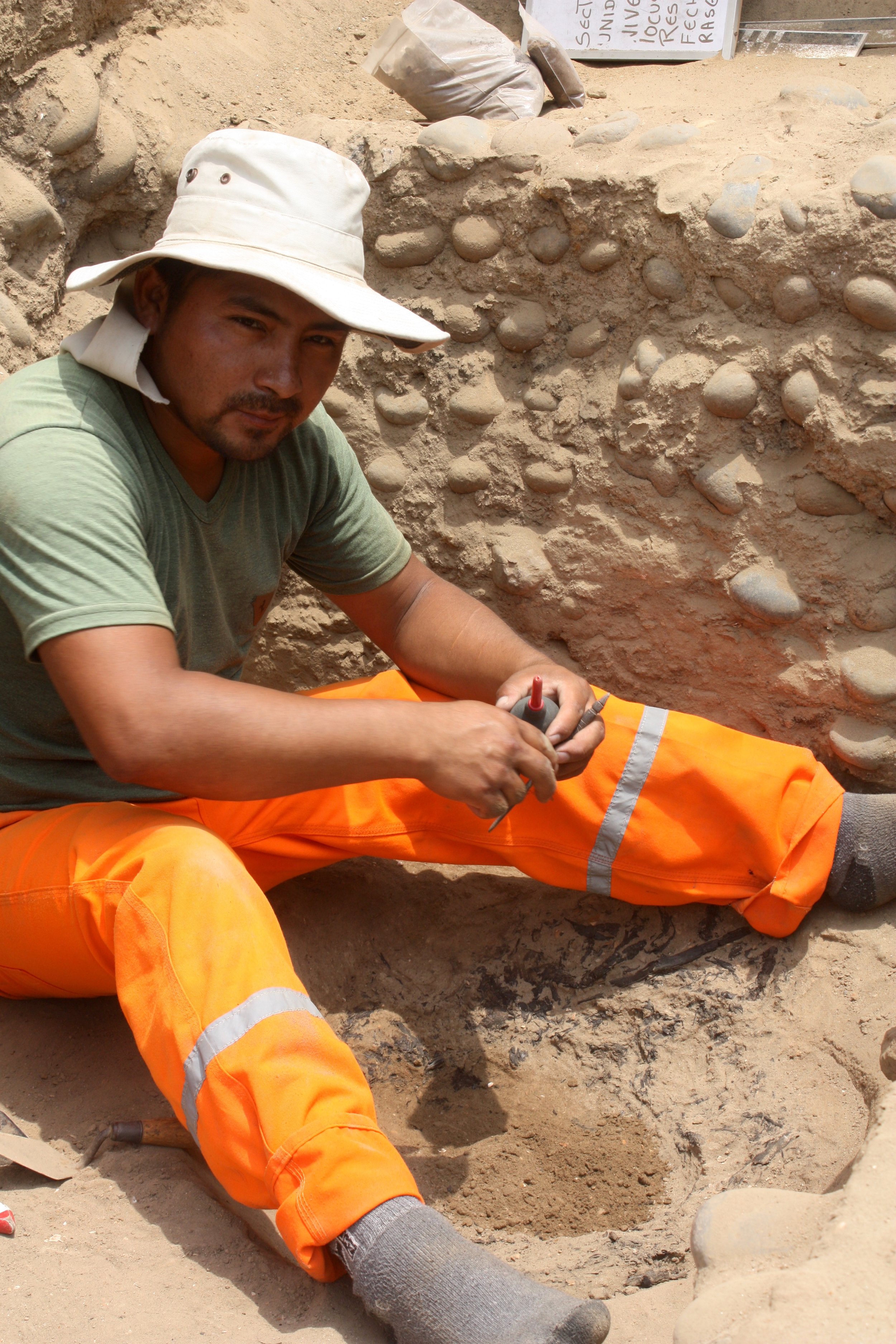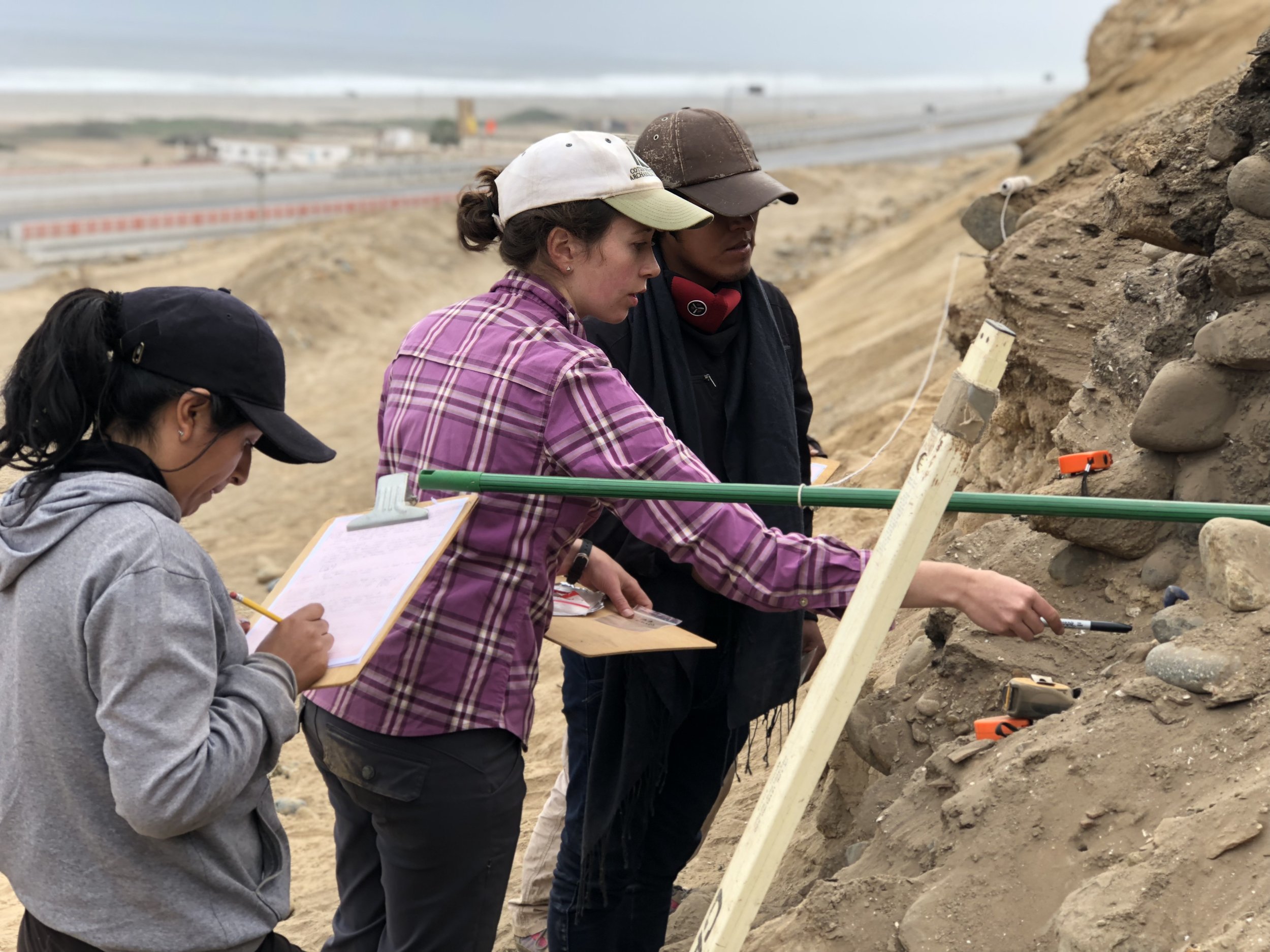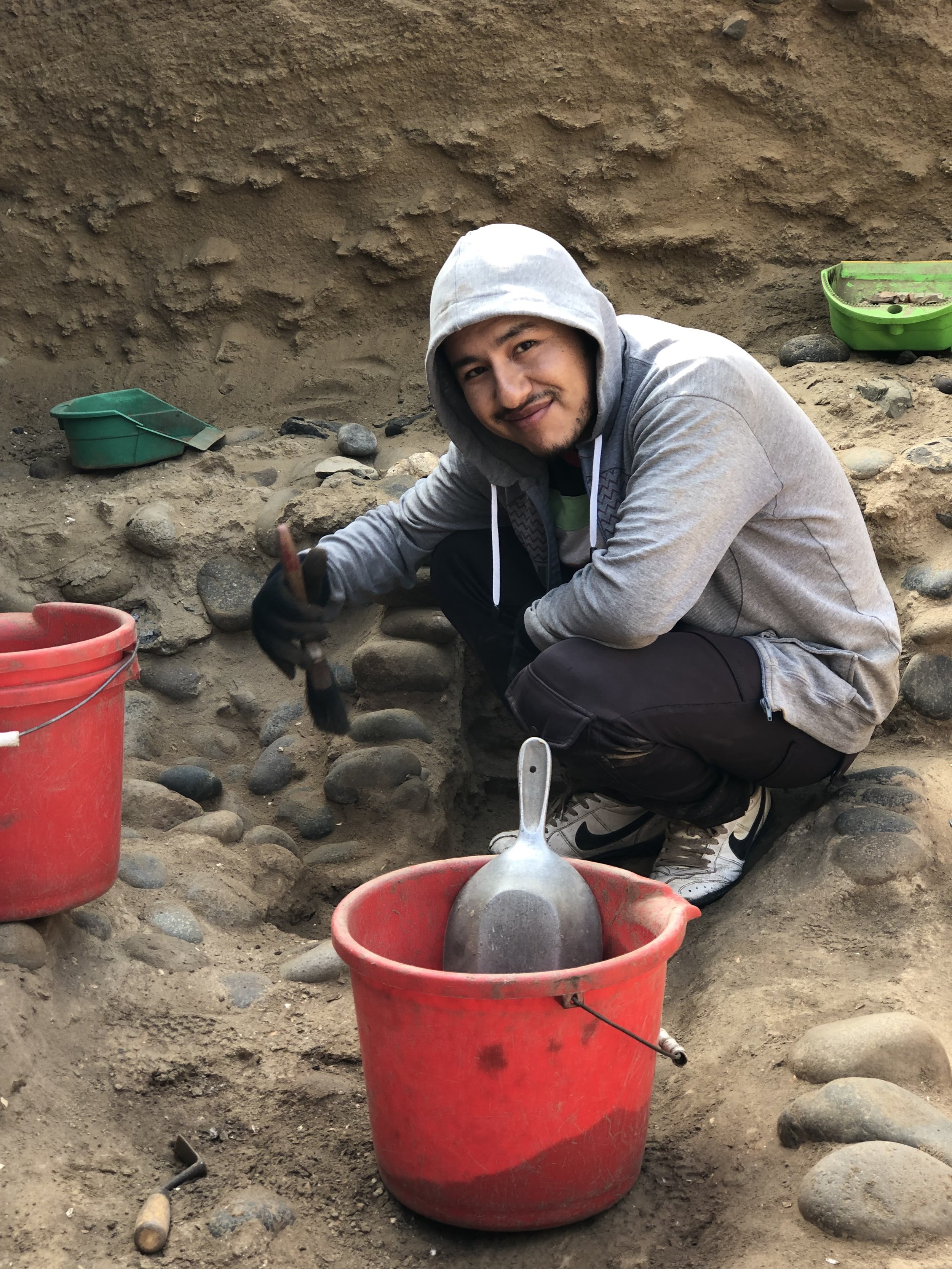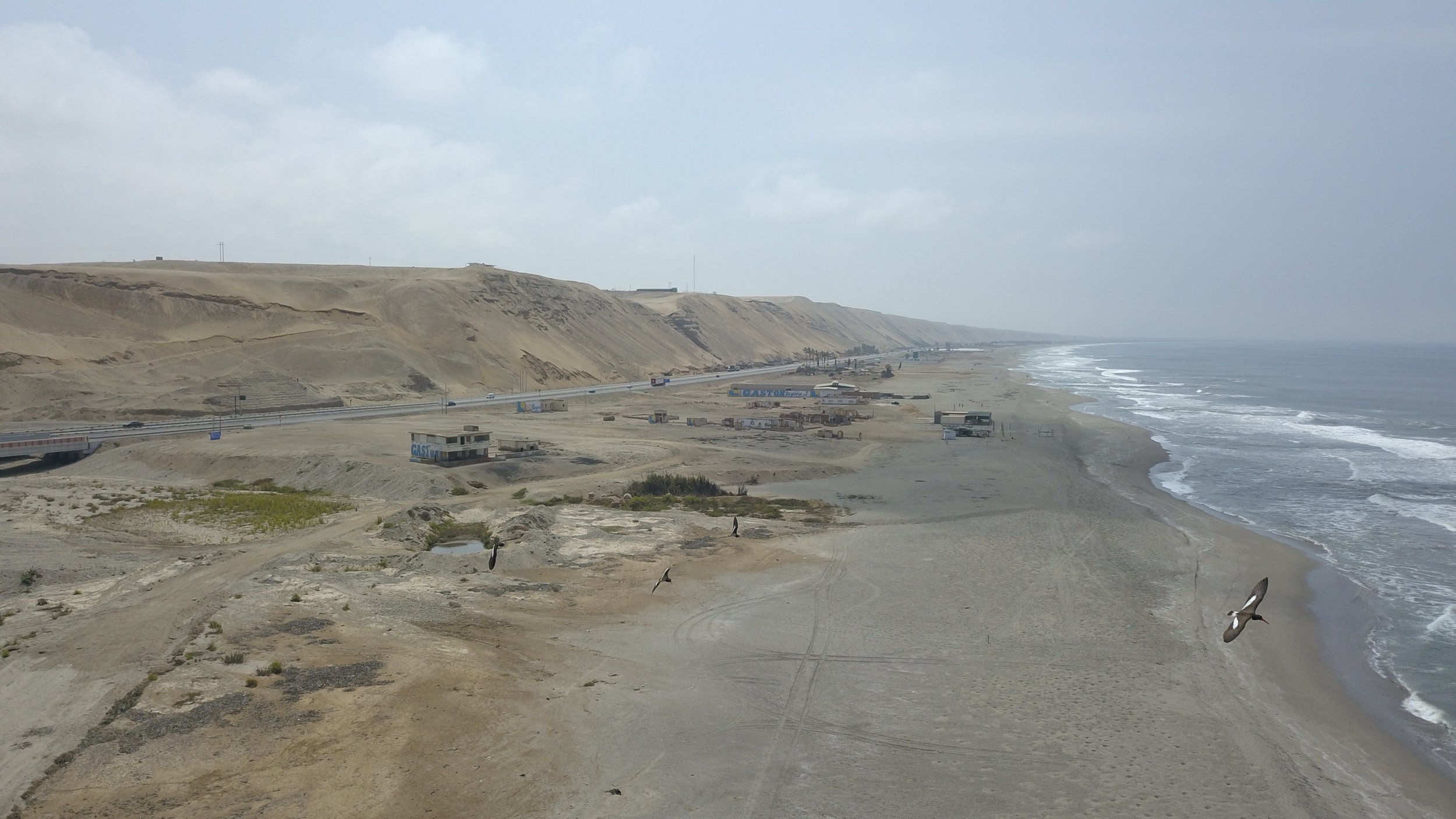PIA Jahuay — Maritime Specialization at the Desert’s Edge
I have codirected the Proyecto de Investigación Arqueológica Jahuay since 2017, alongside my co-directors Camille Weinberg and Lic. Kelita Pérez Cubas.
Jahuay was a littoral village of Topará fisherfolk which was occupied from approximately 200 BC to AD 150. Our research has provided new insights into the regional development of complementary community specialization, a unique economic system which as been ethnohistorically and archaeologically documented in late-prehispanic and early colonial contexts on the Peruvian coast. Based on these excavations, I have argued that Jahuay was a community of full-time maritime specialists who engaged in diverse subsistence activities including fishing, littoral and sub-tidal shellfish collection, and hunting of marine birds and mammals (especially pinnipeds). These products were not only consumed locally, but were also preserved on drying terraces and exchanged with other regional communities for agricultural products and craft goods. Additionally, we identified evidence that Jahuay maintained control over their essential means of production by practicing limited horticulture, growing their own cotton and bottle gourds which were used to produce fishing nets and net floats.
An aerial view of Jahuay and the surrounding landscape.
Exploring the littoral near Jahuay.
A communally-maintained production and storage area at Jahuay.
Top: fish vertebrae in various sizes, and a ray dental plate.
Bottom: Plant parts from gourds (left) and cotton (right).
Terraces for drying fish. Fish scales were found embedded in the terrace floors.
Panoramic view of agricultural fields and archaeological sites in the middle Topará Valley.
Richard Espino Huaman shows a marine shell found at an archaeological site 15 km inland.
PIA Jahuay has been a long-term collaboration between US-based archaeologists, Peruvian scholars, and community members from Chincha. We are especially grateful for the support of the more than twenty undergraduate students and recent alumni from the Universidad Nacional San Luis Gonzaga de Ica who have made this project such a success.
PIA Jahuay excavations were authorized by the Peruvian Ministry of Culture under Resolución Directoral No. 145-2017-DGPA-VMPCIC/MC and Resolución Directoral No. 148-2018-DGPA-VMPCIC/MC, and supervised through inspections by the Dirección Desconcentrada de Cultura de Ica.













Contact me: I can be reached at jeosbo@umich.edu
Visit my profiles at GoogleScholar and academia.edu.








